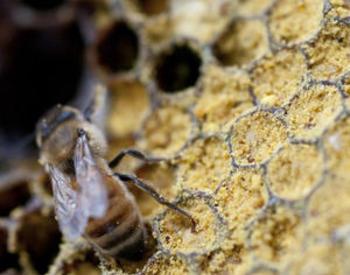Hey, Big Guy…Unlike most other bees, male European Wool Carder bees (Anthidium manicatum) are bigger than females. They use their size to protect their favorite flower patch from other males, keeping it for their own mates. They are one of the most territorial bees in North America! Though non-native, they are fun to observe as they hover and dive on patrol.
Females have their own unique feature. They gather “wool”, the fuzz (trichomes) from wooly plant leaves, to line their nest cells, hence their name of Wool Carder Bee. Like other solitary bees, each female prepares and provisions her own nest. She uses the soft trichomes to line a nest cell inside a hollow stem or abandoned beetle burrow. She then provisions every cell a store of pollen and nectar, lays an egg, and caps the cell with more fuzz. When all of the cells have been constructed and filled, she fills the nest entrance with more fuzz and materials such as pebbles or chewed up wood.
In another dissimilarity from most other bees, the females hatch first. The male eggs are laid at the far end of the nest, giving these big boys longer to develop.
Summary: Male Wool Carder Bees (Anthidium manicatum) use size and agility to protect their territory. Females gather fuzz from wooly leaves for their nests, hence their name.
All photos ©Ellen M. Silva and may be used without restriction by Oregon Bee Atlas.



















